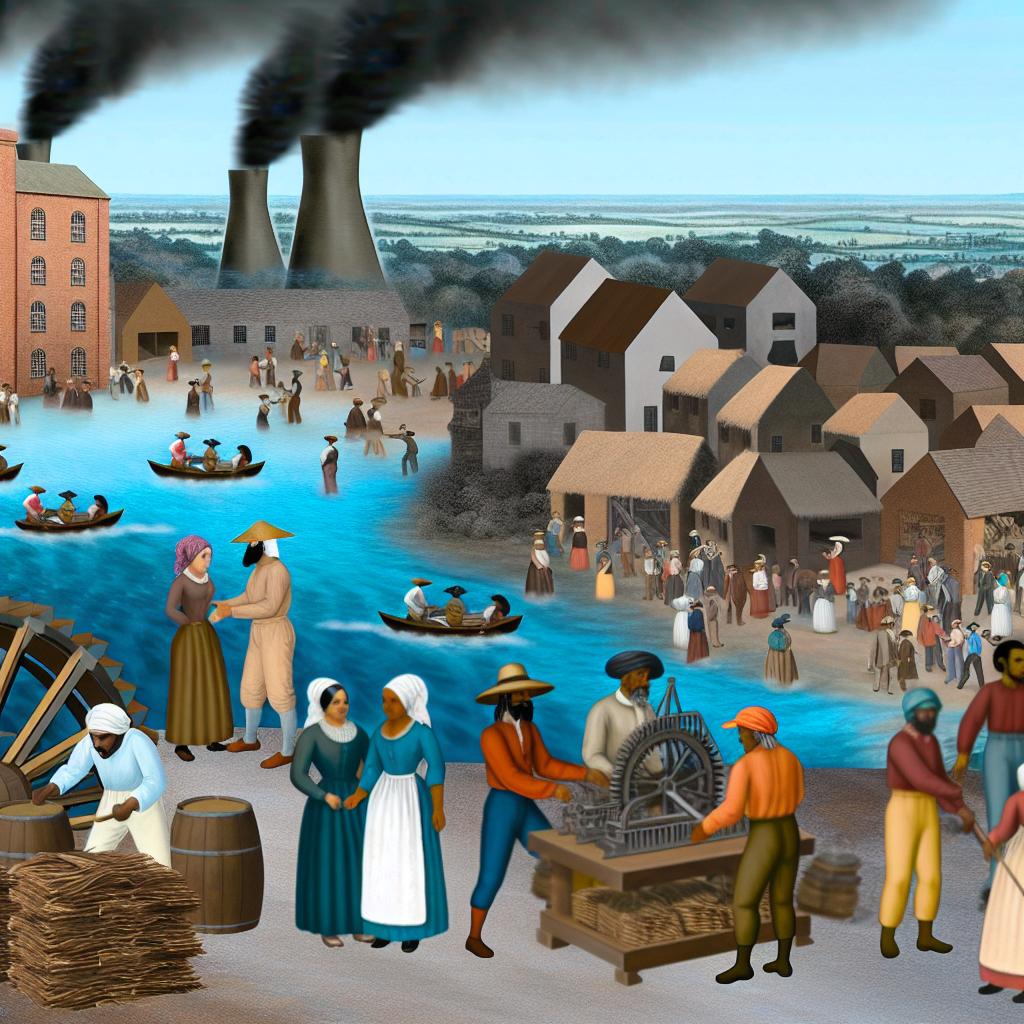The Importance of Lakes in the Industrial Revolution
The Industrial Revolution, unfolding in the late 18th century and extending well into the 19th century, represents a monumental period of transformation. It marked a shift from agrarian economies to those driven by industry and urban growth. This epoch was underpinned by numerous technological advancements and a reimagining of how resources could be utilized. Among the natural resources that played a cardinal role, lakes found themselves at the forefront due to their versatile contributions to economic and industrial realms. By delving into the significance of lakes, one uncovers a deeper understanding of their impact on various facets of the Industrial Revolution.
Lakes as Sources of Water Power
One of the foremost contributions of lakes to the Industrial Revolution was their role as sources of water power. Prior to the advent and widespread use of steam engines, many burgeoning industries relied heavily on water for power generation. Utilizing waterwheels, industries harnessed the velocity and potential energy of flowing water. This not only provided a steady and sustainable power source but also was significantly more economical compared to other energy forms available at the time. Lakes and the rivers fed by them turned into natural power stations that drove the operations of mills and early factories. Especially in the textile and grain milling industries, water power became the cornerstone upon which these sectors were built, offering an early glimpse into sustainable industrial practices.
Transportation and Trade: The Natural Waterways
Beyond serving as energy providers, lakes emerged as critical components in the domains of transportation and trade. They functioned as natural highways, enabling easy and efficient movement of raw materials from one region to another. Before railways became prevalent, water transport was the most viable method, especially for heavy and cumbersome goods such as coal, iron, and lumber. This was crucial in regions endowed with extensive lake networks, like the Great Lakes in North America or the English Lake District. The existence of lakes reduced the costs and increased the efficiency of trade and logistics, fostering an environment where industrial productivity and commerce could flourish without the constraints imposed by primitive land transport systems.
Learn more about the Great Lakes.
The Role of Lakes in Supporting Urban Growth
As industrial activities burgeoned, so did urban centers strategically located near lakes. The proliferation of cities around lakes wasn’t serendipitous; rather, it was deeply intertwined with the resources and transportation advantages that lakes offered. These urban areas became epicenters of industrial and economic activities, drawing populations looking for employment and better living standards. The resources available around lakes—both tangible such as water and raw materials, and intangible such as trade routes—facilitated not only the establishment but also the expansion of these cities. Consequently, lakes inadvertently played a role in urban planning and growth, contributing to the rapid urbanization that characterized the Industrial Revolution.
Environmental Impacts: The Dual-edged Sword
While lakes were instrumental in the success of the Industrial Revolution, they were not immune to the adverse effects brought on by this intense economic activity. The flip side of industrialization was environmental degradation, with lakes being subjected to pollution from factories and settlements. Industrial waste often found its way into these bodies of water, leading to the deterioration of water quality and the disruption of ecosystems. This posed significant challenges for the sustainable management of lakes, highlighting the need for better industrial practices and environmental governance long before they became integral to contemporary discourses on sustainability and ecological preservation.
Read more on the Industrial Revolution.
Conclusion: Reflecting on Historical Significance
In retrospect, lakes were undeniably a pivotal element in driving the Industrial Revolution. Whether through providing water power, serving as transportation conduits, or fostering urban growth, their contributions were multifaceted and substantial. It is, however, essential to reflect on the environmental challenges they faced, as these insights can guide modern industry and sustainability efforts. Appreciating the historical significance of lakes not only enriches our understanding of past industrial landscapes but also underscores their potential roles in present and future sustainability initiatives. By learning from history, there exists an opportunity to harness natural resources more responsibly, ensuring that economic development and environmental stewardship go hand in hand.
The legacy of lakes in the Industrial Revolution serves as a reminder of the delicate balance between utilization and preservation, a lesson that, centuries later, continues to hold relevance in the continuous evolution of industry and society.
